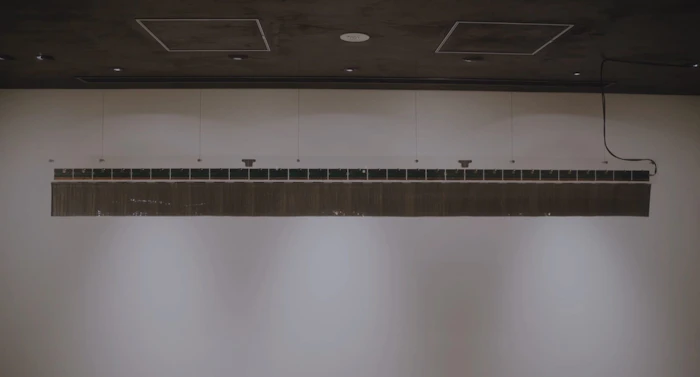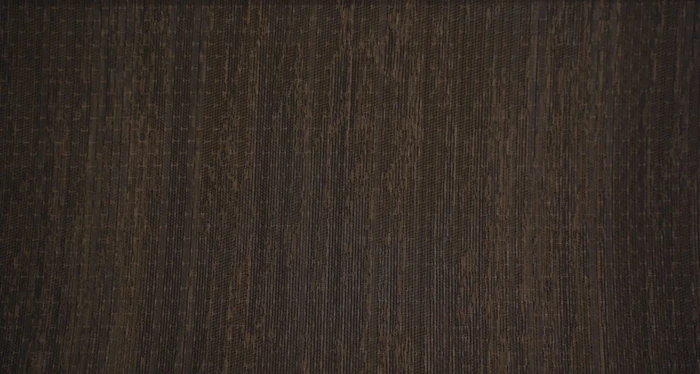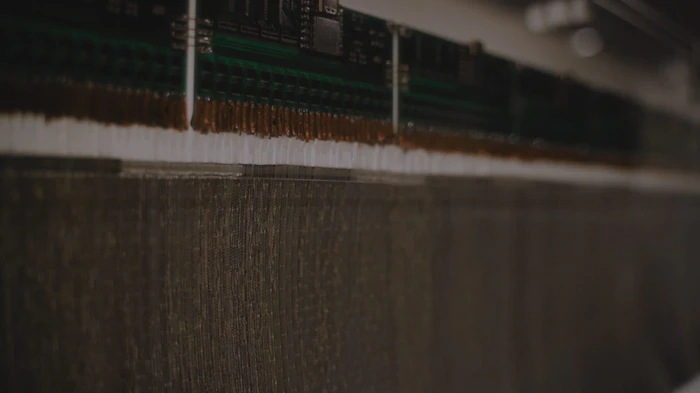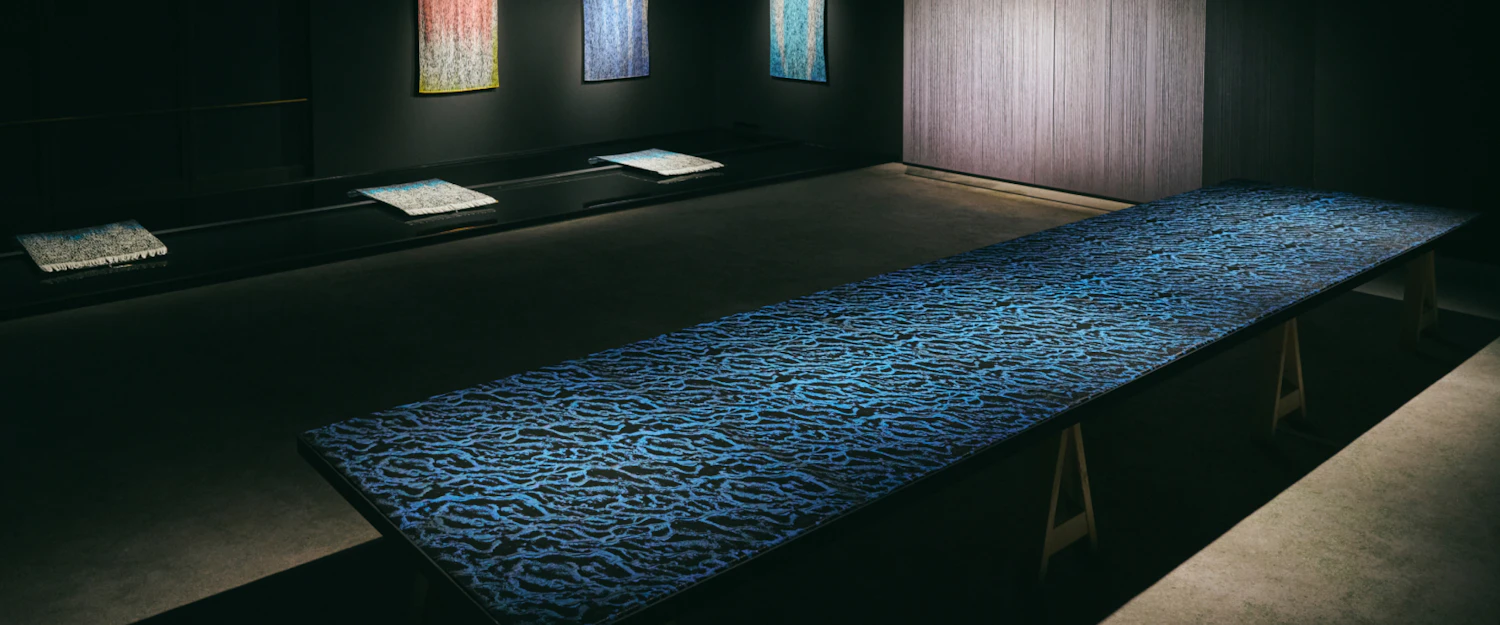
Ambient Weaving
Since 2020, ZOZO NEXT Co., Ltd, Yasuaki Kakehi Laboratory at the University of Tokyo Graduate School of Interdisciplinary Information Studies, and HOSOO Co., Ltd, have been working together to develop new textiles. These textiles seek to balance functionality and aesthetic by combining traditional craftsmanship with cutting-edge materials and interaction technologies. This collaboration has given rise to the concept of "Ambient Weaving," which represents a textile that manifests environmental information and a fabric that is woven with the environment itself.
Textiles are reimagined as ambient media, an interface representing the environment to propose unique expressions of changes within the surroundings harmoniously through textiles.
Wave of Warmth
This is a woven textile that changes color according to the surrounding temperature. By coating both sides of Japanese washi paper with an ink containing a leuco dye which changes color when it reaches a certain temperature, and then cutting it, we weave it into the weft as foil. When the temperature rises above 25 degrees, it changes color from black to blue, and when the temperature drops, it returns to black. Through these reversible and real-time changes, it awakens people's awareness by visually appealing to changes in temperature.
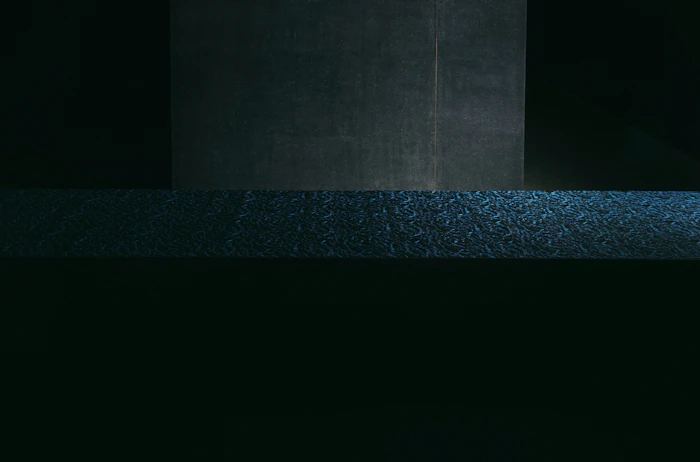
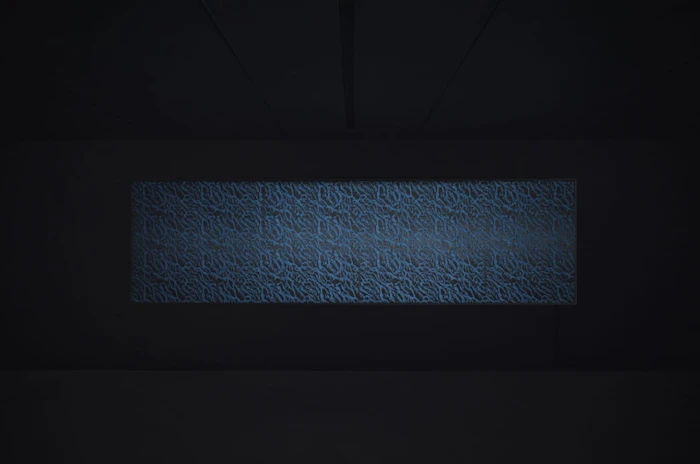
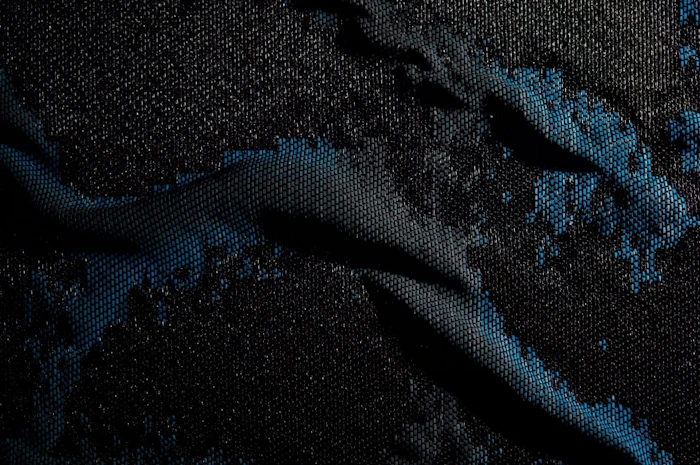
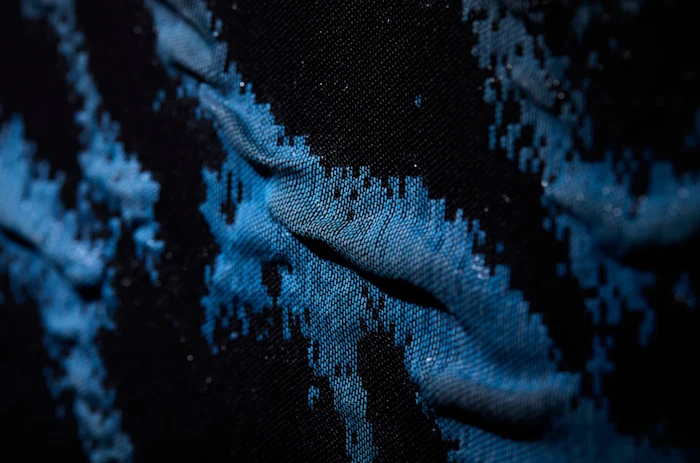
Drifting Colors
This is a textile that applies a technique for separating substances invented by a Russian botanist, Mikhail Tsvet, called chromatography. Originally, dyeing refers to the absorption and fixation of dye on yarn, but in this work, the dyes move along the yarn at different rates due to differences in charge, mass, and hydrophobicity of each dye. By maintaining the appropriate humidity and moisture content, this separation and movement occurs, and the colors continue to change dynamically over time, even after the dye has permeated the yarn.




Memories of Flow
This work encapsulates a resin that hardens by ultraviolet light into thin tubes which are woven into the textile. Before being exposed to ultraviolet light, it is a flexible textile, but hardens in a few seconds when exposed to ultraviolet light to maintain the shape. In this work, by placing the textile in a water tank where water stagnates and hardening it with ultraviolet light, the flow of water is captured on the fabric.



Woven Glow
"Woven Glow" is a luminescent textile. It is a work in which the foil of an organic EL diode (OLED), which emits light as voltage is applied, is woven as the weft. The OLED foil is placed on the back, and can behave as a design no different from ordinary Nishijin weave when not emitting light. There are monochrome and three-color luminescent versions of this work.




Woven Clouds
"Woven Clouds" is a textile with variable light transmittance. The foil is cut from PDLC (polymer dispersed liquid crystal) and is woven into the textile as the weft. Although it is a textile with opaque white color, when voltage is applied, the liquid crystal molecules are oriented in the direction of the electric field, allowing light to pass through. Originally, the textile itself, which reflects the light of the environment, changes its state dynamically by interfering.
